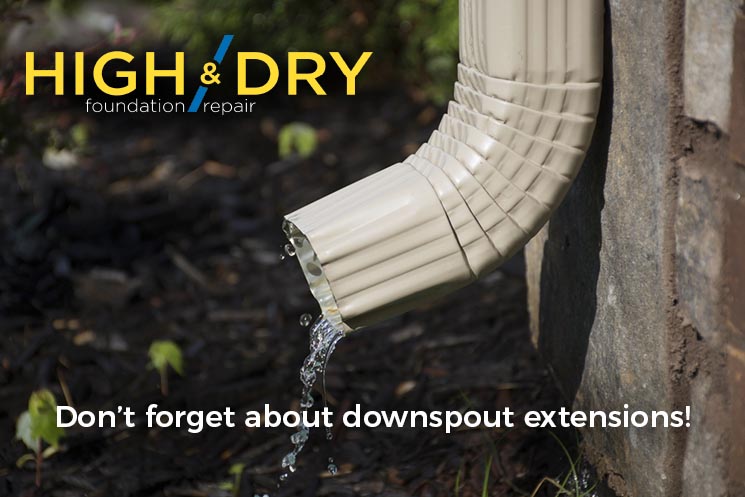High & Dry Foundation Repair » Services » Exterior Waterproofing
Exterior Waterproofing Services
While it’s important to keep your basement nice and dry with an interior waterproofing system, effectively managing water from the outside of your home is equally important.
There are many solutions available to redirect water away from your home’s foundation, and determining which is best for your particular home depends on a variety of factors:
- Is there any existing damage that must first be addressed and repaired?
- Is the soil graded appropriately away from your foundation?
- Where are gutter downspouts, and how are they performing?
These are just a few of the questions we ask during a consultation, but a thorough inspection is always necessary to determine the appropriate solution.
Other Exterior Waterproofing Solutions
Depending on the amount of water entering your home, the condition of your home’s foundation, and a number of other factors, we may recommend one (or several) of the following solutions:
French Drains (Interceptor Drains) – Generally used for slope applications, French drain installation can be implemented when too much water is reaching the foundation and/or the surrounding soil is impermeable. Typically, a perforated pipe and gravel are installed in a trench 1 to 2 feet deep, depending on grade or topography.
Underground Downspout Extensions – One solution to water collecting under a downspout is to extend the downspout so that it carries water farther across the property and away from the structure.

How much does it cost to install a French drain?
The cost of installing a French drain depends on the size of the project, the depth of the drain, soil conditions, labor costs, and the drainage system's complexity. On average, homeowners can expect to pay between $1,500 to $5,000 for a basic French drain installation. However, for larger projects or those requiring extensive excavation and drainage solutions, costs can range upwards of $10,000 or more. It's advisable to obtain estimates from local contractors for accurate pricing based on your specific requirements.
Where would I need a downspout?
Here are some places you are most likely to need a downspout around your house to efficiently manage rainwater drainage:
- Roof Corners: Look for areas where roof lines intersect, as water tends to accumulate at these points.
- Low-lying Areas: Identify spots where water pools or collects during rainfall.
- Foundation Perimeter: Install downspouts along the perimeter of your home to direct water away from the foundation.
- Gutters: Ensure each section of guttering has a downspout to handle water runoff effectively.
- Near Windows and Doors: Install downspouts near windows and doors to prevent water from seeping into your home.
Inspecting your property during rainstorms or after heavy rainfall can help identify areas where downspouts are needed to prevent water damage and erosion.
Surface Drains – Different systems of grates and basins can be installed, depending on the amount of motor or foot traffic and the amount of debris (i.e. leaves, etc.) in the area.
Preventing water from entering your home in the first place is the best approach to keeping your basement dry and free of future foundation problems. Contact us today for professional basement waterproofing service throughout the St. Louis metro area.